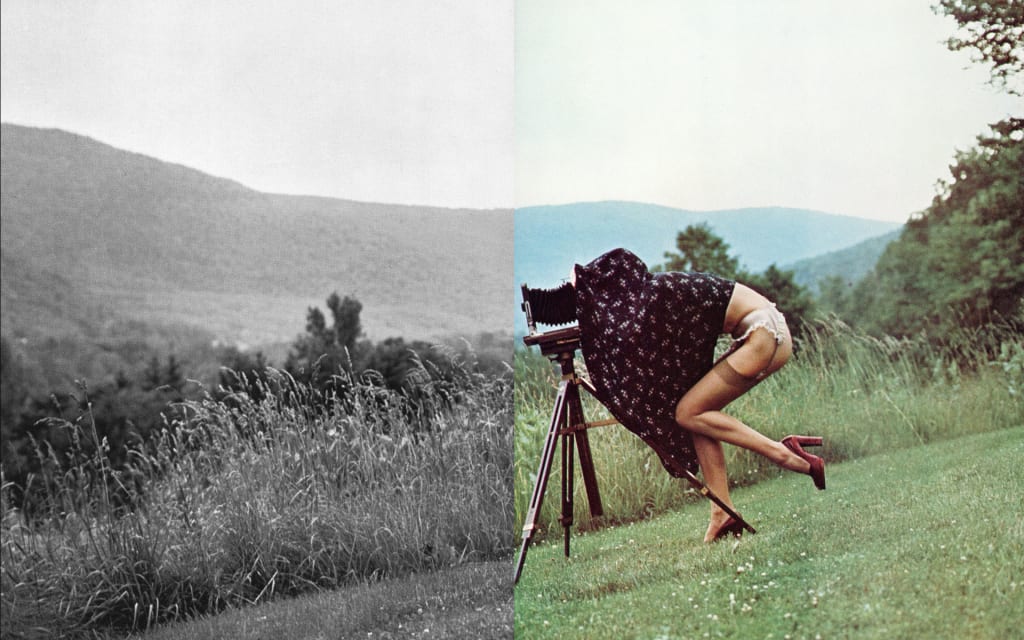History of Erotic Photography
The invention of the camera ushered in a new era in the history of erotic art.

There is a quiet little revolution brewing in the world of art photography: People are starting to make photos—imaginative, artful, complex, perceptive photos—of sex. Unlike other photos that have long been part of the art photography world, these are not photos where sex tiptoes around the edges or makes its presence known only by hint and innuendo. These are photos with sex as their central and unapologetic subject matter—photos that invite and even compel us to acknowledge and think about sex outside our customary attitude of mixed horror and titillation. These are photos that represent sex as the subtle, paradoxical, ironic, profound, humorous, often mystical phenomenon that it really is.
Of course, there have been photographs of sex for almost as long as there have been photographs of anything else. Until recently, however, the let’s be-naughty context for the production and distribution of these images has largely defined, distorted, and severely limited the range and style of the images being produced.
But lately, something different has begun to emerge in the world of sexual photography. Starting in the late 1970’s, but gathering momentum only in the last five or ten years, dozens of skilled and thoughtful photographers have begun to turn their art and attention to sex in a spirit that is very much outside the exaggerated rebelliousness of the pornographic tradition. For these photographers, the power and impact of a sexual image need not have anything to do with violating taboos, or showing bodies and sexual acts with unrestrained graphic emphasis. Collectively, these photographers insist that there are things to be said about sex through photography that go far beyond the loudly trumpeted announcement of its very existence.
Sex is beginning to be seen as a legitimate subject for serious, artistic photographic exploration and, in that emerging photographic sensibility, sexual issues are beginning to be investigated and explored with the subtlety, complexity, diversity, and care that have always been brought to other, more traditionally accepted, subjects of artistic expression. The resulting, rapidly expanding, body of photographic work has become increasingly imaginative and diverse — work as far removed from the conventions and limitations of commercial pornography as it is from the conventions and limitations of desexualized photography. Unlike commercial pornography, the approach of one sexual photographer is as different from the approach of another as Picasso is different from Monet.
As more and more of the new sexual photography is being produced, and as photographers get to see, discuss, and learn from each other’s work, sexual photography has begun to take on the character of a real photographic genre — a collection of work that coalesces a cohesive subculture of interests and forms. Photographers who are doing specifically sexual work, once isolated from one another by social and artistic ostracism, are beginning to learn of each others’ existence, see each others’ work, gain inspiration and insight from each others’ photographic experiments and explorations. As both the volume and the quality of sexual work being produced increases, photographers are becoming more willing to admit and celebrate their fascination with sexual matters, and to show work that they had previously kept almost entirely to themselves.
Of course, sexual photography—even when produced and shown within the auspices and respected conventions of the fine art world—remains highly controversial and presents photographer, subject, and viewer alike with a complex of issues and dilemmas directly related to its sexual focus. Within our culture that designates sex for pleasure as private at best and immoral at worst, the mere act of witnessing other people being sexual—whether the witness is the photographer or the viewer—involves transgressing one of our society’s most strictly enforced boundaries.
How does a photographer interact with subjects who are not professional sex performers in ways that allow those subjects to be sexual in front of the camera without embarrassment and self-consciousness? Is it possible to expose to both the camera and the public such a quintessentially private act without so compromising the act itself that any honest statement about sexual experience becomes impossible?
What role do photographer and viewer as inevitable voyeurs play in the process of creating sexual images? Should sexual photographs acknowledge and include awareness of the photographer’s, and ultimately the viewer’s, presence? Or should the photographer and viewer try to remain invisible as possible, protecting the illusion that the image was taken as if the subjects were existentially alone?
Given the controversial and conflicted nature of sex in this culture, what is the photographer’s relationship to the likely discomfort of viewers when they are shown images with sexual content? Does the photographer emphasize and make use of the viewer’s inherent conflict (wanting to see/not wanting to see) for increased emotional impact? Or does s/he take steps to put viewers more at ease with the sexuality of the material, perhaps softening or even disguising its existence?
To what extent does the photographer direct, or even invent, the sexual scenario being photographed, or use the subjects to enact his/her sexual vision? To what extent does s/he allow the subjects to define the moment and simply record the sex of the interaction they produce? Must the sex in a photograph be spontaneous, rather than directed or contrived, for the photograph to be honest or meaningful? How much does the photographer reveal about his/her own sexual perspective in the process of ostensibly photographing someone else’s sexuality? Is the photographer’s purpose to introduce a new perspective? To challenge viewers’ sexual attitudes and assumptions? Or does s/he seek to offer the viewer a depiction of sex that resonates with and confirms the sexual reality and preference that the viewer brings to the moment of viewing?
Over and above all other considerations, what is most important, noteworthy, interesting, perplexing, confusing, exciting, and disturbing about sex anyway? How does a photographer use lighting, setting, focus, grain, color, and contrast to best get something about that on film? What balance does a photographer choose between subtlety and blatant proclamation? Softness and harshness? Intimacy and distance?
As with love, death, and other fundamental aspects of being alive, art has things to teach us about sex that cannot be learned from how-to manuals, scientific studies, therapeutic consultations, or political and ethical debates. A picture can be worth a thousand words because it can capture multiple levels of a complex reality, and show us how the various subtleties and facets combine to produce the unified whole that is one rich moment of human existence, fully experienced.
Who we are as sexual people, and how we conceive of sex and its role in our lives, is much the product of what we see and hear around us. Art has a unique and important role to play in helping us understand and relate to our sexual feelings and desires with all the respect and attention they deserve. The emergence of a genre of artistically sophisticated sexual photography that refuses to reduce sex to a trivialized shadow of itself has the potential of encouraging all of us to appreciate sex more fully and openly, and thus be happier and more deeply fulfilled in the sexual aspects of our lives. Hopefully, what is now happening in sexual photography will be only the beginning of what will develop in the future.
About the Creator
David Steinberg
Journalist, fine art sexual photographer. Author of This Thing We Call Sex, Erotic by Nature, Divas of San Francisco, Photo Sex, and The Erotic Impulse.






Comments
There are no comments for this story
Be the first to respond and start the conversation.